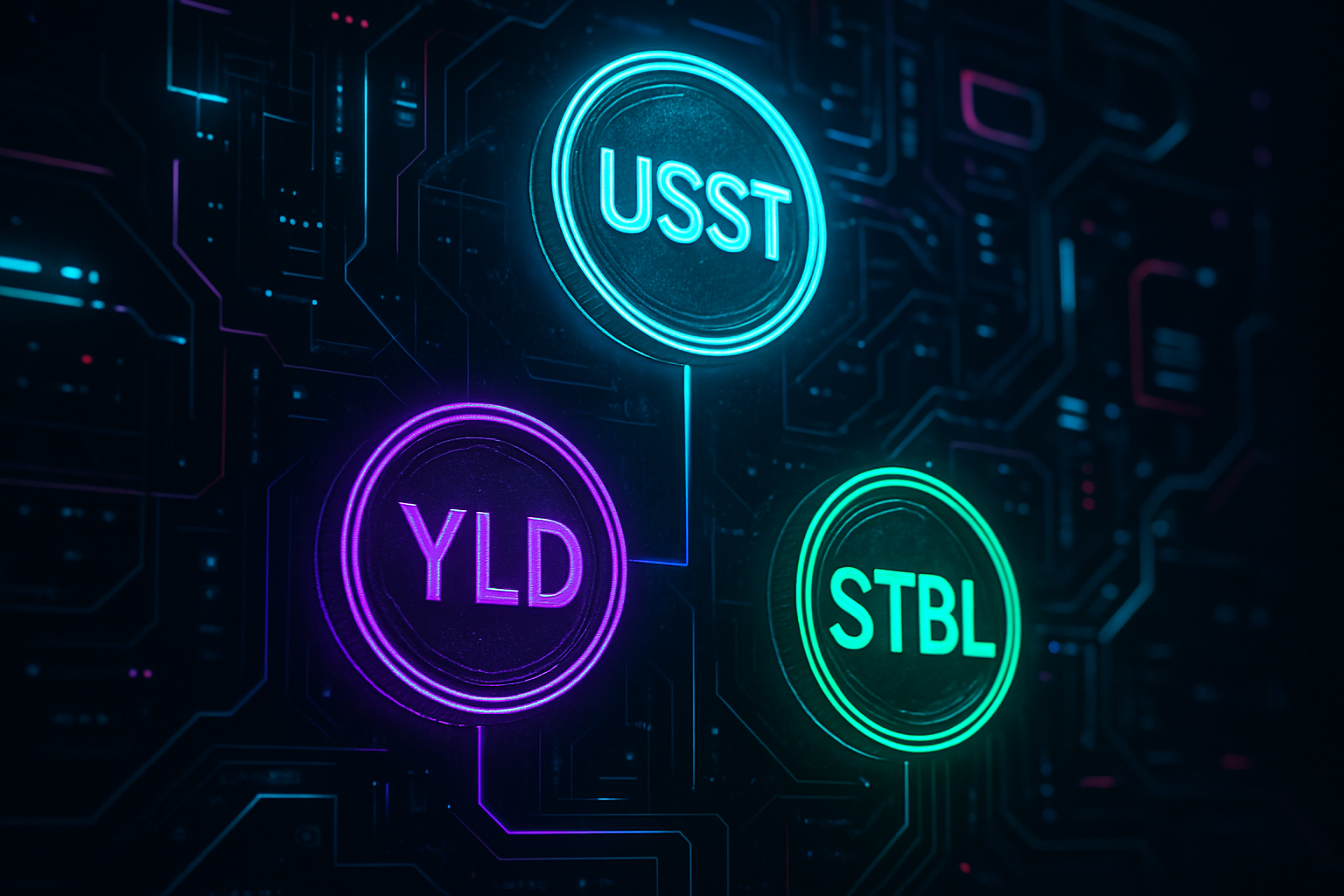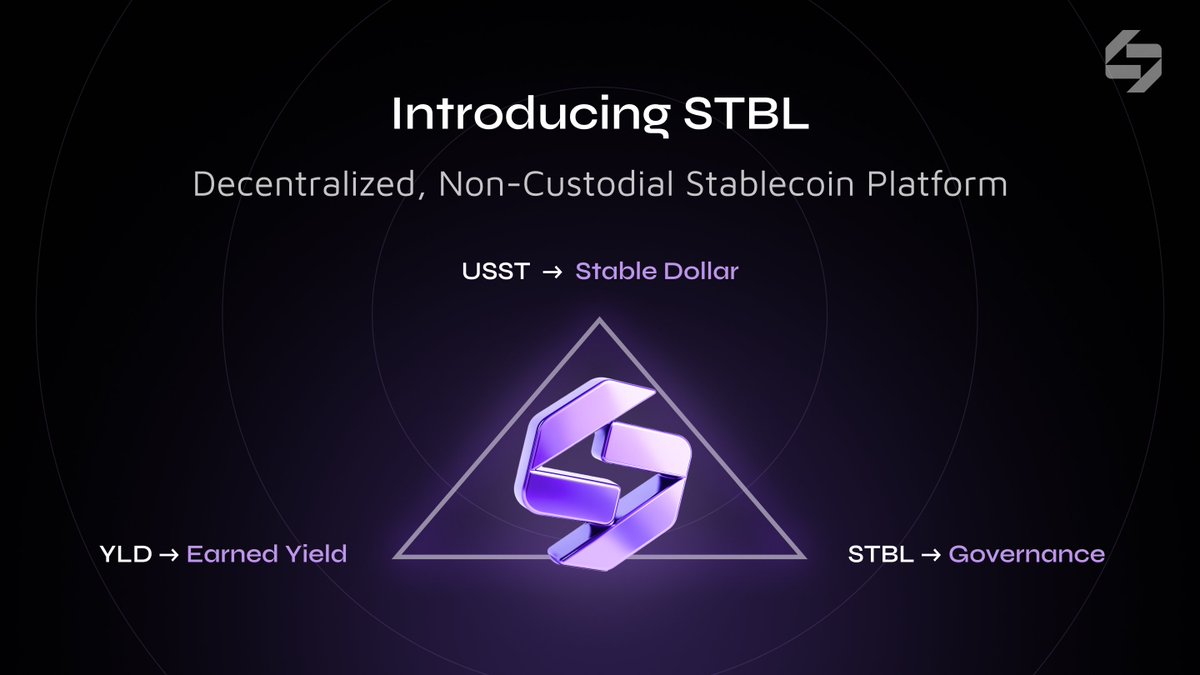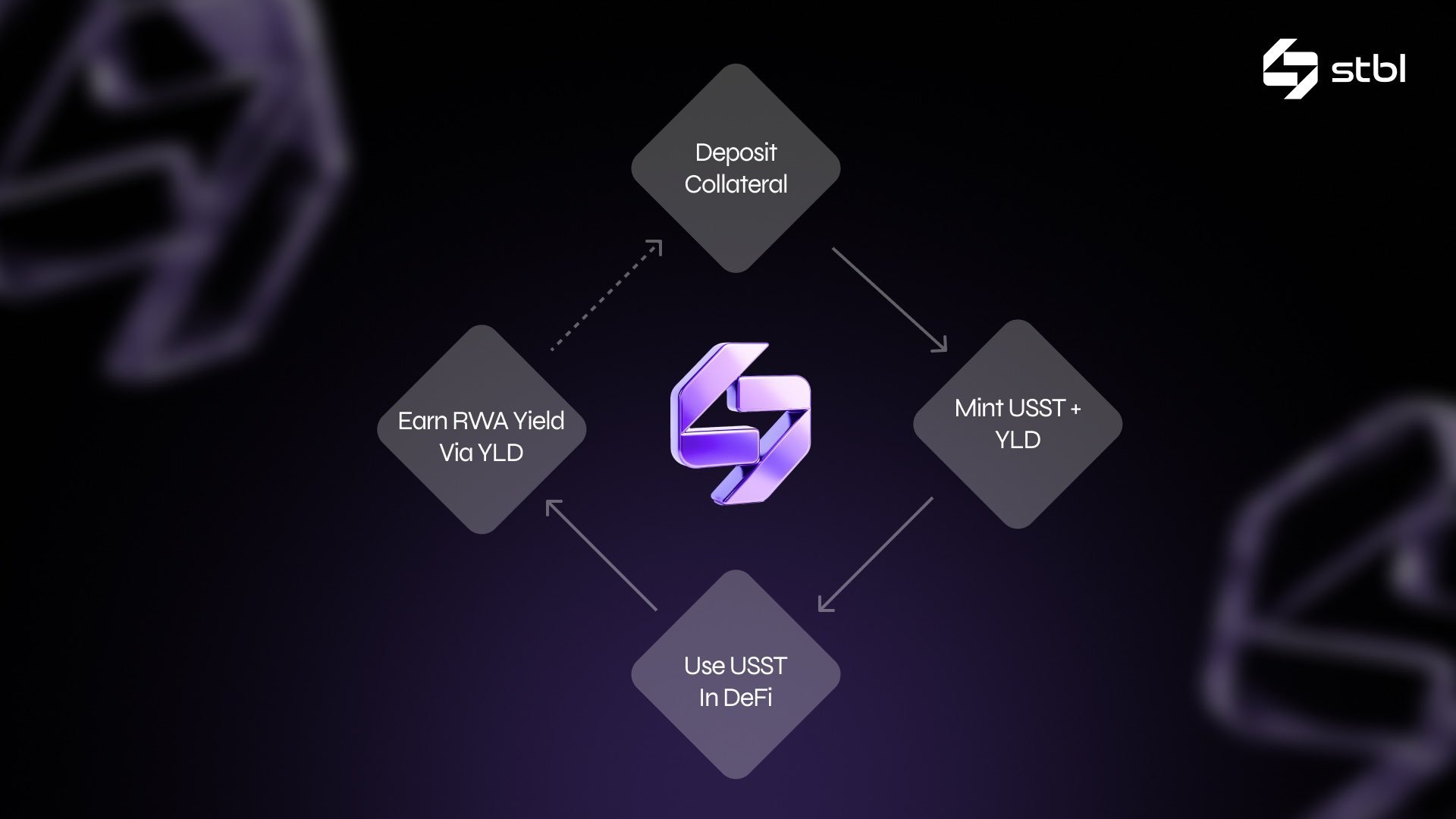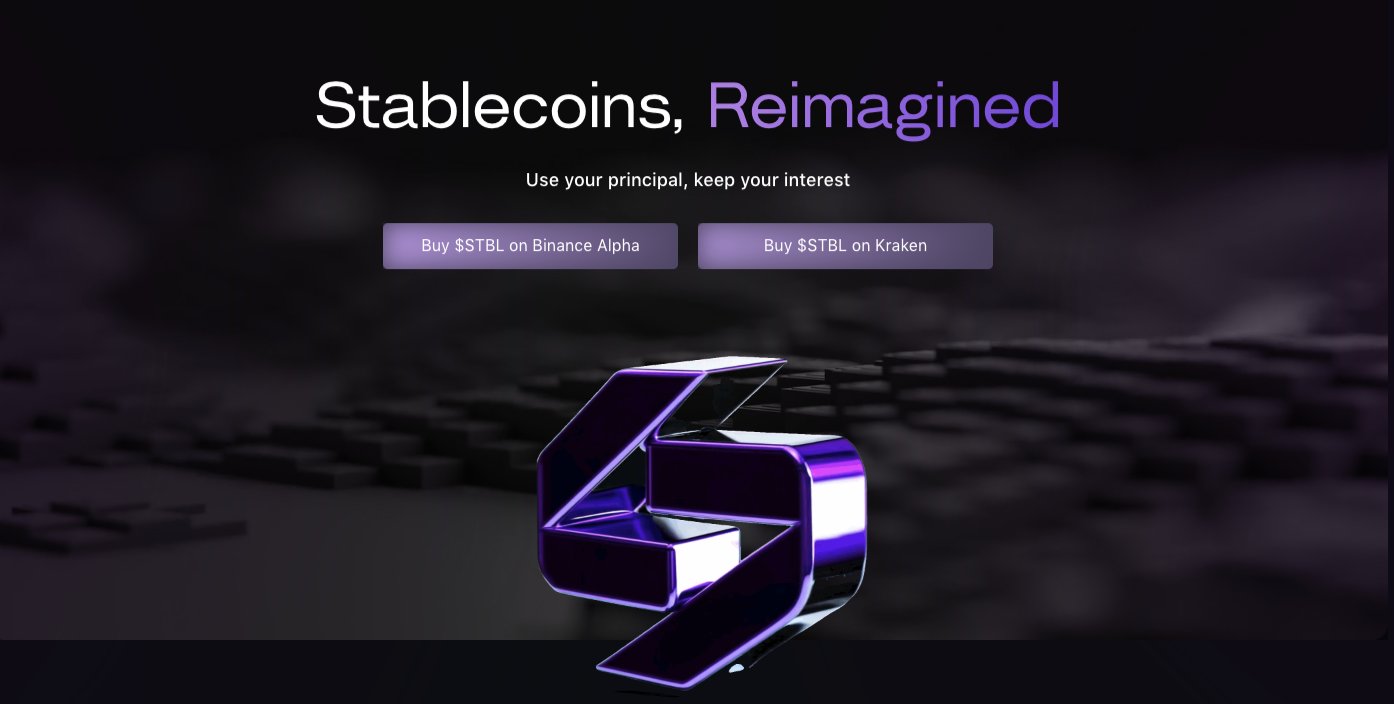STBL, USST, and YLD: How Three-Token Stablecoin Models Maximize Yield

Stablecoins have evolved rapidly, but STBL’s three-token stablecoin model is setting a new benchmark for maximizing yield without sacrificing liquidity or governance. As of September 19,2025, the STBL token trades at $0.2158, up and 0.6886% in the last 24 hours, reflecting growing market confidence in this innovative architecture. But what exactly makes the STBL protocol’s approach so compelling for DeFi investors and passive income seekers?
The Anatomy of Three-Token Stablecoins: USST, YLD, and STBL
The genius of the STBL stablecoin model lies in its clear separation of principal (liquidity), yield rights, and governance. Let’s break down each token:
- USST (Stablecoin): This is a fully collateralized stablecoin pegged to the U. S. dollar and backed by tokenized real-world assets (RWAs) such as Treasury Bills. Users mint USST by depositing RWAs into the protocol.
- YLD (Yield Token): Rather than baking yield into the stablecoin itself, yield rights are spun out as non-fungible tokens (NFTs) called YLD. These represent claims on all interest generated by the underlying collateral.
- STBL (Governance Token): Holders shape protocol upgrades and risk parameters through decentralized governance, an essential piece for long-term sustainability.
This design addresses a persistent DeFi dilemma: how to keep your capital liquid while still capturing yield from high-quality collateral like U. S. Treasuries.
How Yield Splitting Unlocks Passive Income Potential
The separation between USST and YLD is not just clever, it’s transformative. When you deposit RWAs into the protocol, you receive USST for spending or trading and YLD as a tradable NFT that accrues all future interest from your deposit. Want liquidity? Use or swap your USST anywhere ERC-20 tokens are accepted. Want exposure to pure yield? Hold or sell your YLD on secondary markets, no need to lock up your principal.
This unlocks several benefits:
- Liquidity without compromise: Spend or move your stablecoins freely while retaining claim to future yield via YLD.
- Simplified risk management: Choose your exposure, hold principal only (USST), pure yield (YLD), or both for maximum upside.
- Yield market dynamics: The value of YLD fluctuates based on RWA performance and overall demand for passive income opportunities, creating new trading strategies around yield speculation.
Market Performance: Tracking STBL at $0.2158
The market has responded positively since STBL’s recent Token Generation Event (TGE). With a current price of $0.2158, up from a low of $0.1236 in the past 24 hours, momentum is building around protocols that decouple utility from yield generation (source). This is more than just price action, it signals growing demand for sophisticated stablecoin structures that let users optimize capital efficiency without giving up governance rights or future returns.
STBL (STBL) Price Prediction 2026-2031
Professional outlook based on STBL’s innovative three-token stablecoin model, current adoption, and evolving DeFi landscape.
| Year | Minimum Price (Bearish) | Average Price | Maximum Price (Bullish) | Estimated % Change (Avg) |
|---|---|---|---|---|
| 2026 | $0.19 | $0.27 | $0.38 | +25% |
| 2027 | $0.23 | $0.34 | $0.52 | +26% |
| 2028 | $0.28 | $0.42 | $0.67 | +24% |
| 2029 | $0.32 | $0.50 | $0.83 | +19% |
| 2030 | $0.36 | $0.58 | $1.02 | +16% |
| 2031 | $0.41 | $0.66 | $1.21 | +14% |
Price Prediction Summary
STBL is expected to see progressive growth over the next six years, driven by its unique three-token architecture and the increasing adoption of tokenized real-world assets (RWAs) in DeFi. While short-term volatility is likely due to regulatory uncertainties and competition, the protocol’s utility and yield-splitting model position it for steady price appreciation. Bullish scenarios could see STBL exceeding $1 by 2030 if adoption accelerates and DeFi regulations clarify. Bearish scenarios center on regulatory headwinds or technical setbacks, but the protocol’s RWA backing provides a floor for value retention.
Key Factors Affecting STBL Price
- Adoption of tokenized RWAs and integration with broader DeFi platforms.
- Regulatory clarity and legal frameworks for stablecoins and governance tokens.
- Technological improvements in protocol security and scalability.
- Yield competitiveness compared to other DeFi and traditional finance products.
- Competition from established stablecoin protocols and new entrants.
- Community engagement and governance effectiveness.
- Macro-economic factors influencing demand for yield-bearing digital assets.
Disclaimer: Cryptocurrency price predictions are speculative and based on current market analysis.
Actual prices may vary significantly due to market volatility, regulatory changes, and other factors.
Always do your own research before making investment decisions.
For investors, the three-token stablecoin system is more than a technical novelty, it’s a toolkit for fine-tuning risk and reward profiles. Whether you’re a conservative holder seeking dollar stability (via USST), an income chaser targeting passive yield (YLD), or a protocol loyalist shaping the future of decentralized finance (STBL), this architecture gives you unprecedented control over your DeFi strategy.

Let’s spotlight the distinct roles each token plays:
Key Tokens in the STBL Three-Token Model
-

USST (Stablecoin): USST is a collateralized stablecoin pegged to the U.S. dollar and backed by audited tokenized real-world assets (RWAs) such as U.S. Treasury Bills. Users mint USST by depositing RWAs, enabling spendable liquidity while maintaining exposure to secure, on-chain collateral. Real-world use: USST can be freely used for payments, DeFi trading, and settlements, combining the stability of fiat with blockchain efficiency.
-

YLD (Yield Token): YLD is a non-fungible token (NFT) representing the right to claim yield generated from the underlying collateral. When users mint USST, they receive YLD, which accrues interest from assets like U.S. Treasuries. YLD is tradable, allowing users to sell or transfer future yield rights. Real-world use: YLD holders can maximize passive income or trade yield claims in secondary markets.
-

STBL (Governance Token): STBL is the protocol’s governance token, currently trading at $0.2158 (+0.6886% in 24h). Holders can vote on protocol upgrades, risk parameters, and yield distribution, ensuring community-driven development. Real-world use: STBL empowers users to shape the protocol’s future and participate in decentralized governance.
Real-World Yield Meets On-Chain Flexibility
By collateralizing USST with audited real-world assets like U. S. Treasuries, the protocol delivers tangible, transparent yield that isn’t dependent on volatile DeFi lending rates. This means USST holders enjoy strong dollar-pegged liquidity, while YLD owners tap into real-world interest streams, effectively bridging TradFi security with DeFi composability.
The tradability of YLD as an NFT also unlocks new secondary markets. Yield rights can be sold independently from principal, allowing users to react to changing macro conditions or pursue arbitrage opportunities between different yield-bearing assets. Meanwhile, STBL token holders govern these mechanisms, voting on collateral types, risk parameters, and protocol upgrades to keep incentives aligned and risks managed.
What’s Next for Three-Token Stablecoins?
As protocols like STBL gain traction, expect increased competition among stablecoin issuers to offer more modular approaches to yield and governance. The days of single-token stables may be numbered as users demand both flexibility and transparency in how their capital works for them.
With STBL trading at $0.2158: up nearly 70% in 24 hours, the market is clearly rewarding innovation that puts users first. The ability to separate liquidity from yield is reshaping how passive income is earned in crypto. As more RWAs come on-chain and governance frameworks mature, three-token models could become the new standard for sustainable DeFi yields.
Why This Matters Now
The current macro environment, with rising interest in tokenized treasuries and regulatory scrutiny on stablecoins, makes robust architectures like STBL’s especially compelling. Investors gain optionality: spend with confidence using USST; speculate or hedge with YLD; shape policy with STBL, all while staying liquid and earning real-world returns.
“Innovation rewards the prepared. ” These are still early days for three-token stablecoins, but those who understand the mechanics today will be best positioned as adoption accelerates tomorrow.







